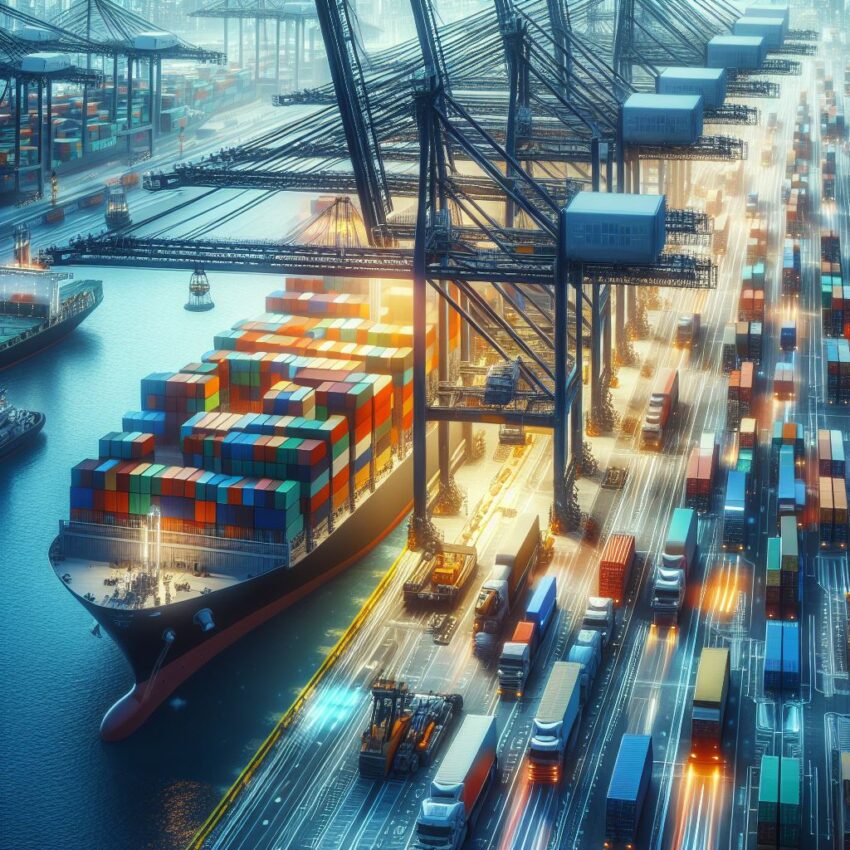
A silent revolution has been sweeping across the waves, altering the landscape of maritime logistics. Gone are the days when captains relied solely on stars and a sextant for navigation. Now, sophisticated algorithms and breakthrough technologies helm the vast container ships, turning the art of vessel routing into a precise science.
Vessel Navigation Algorithms
Vessel navigation algorithms have become indispensable tools for modern maritime transportation, shaping the course of every journey across the seas. While the allure of sailing remains, the methods for plotting these voyages have undergone significant transformation.
Today, vessel navigation algorithms serve as the captains’ trusted advisors, leveraging complex computations to offer precise guidance. These algorithms analyze a multitude of factors, from the dimensions of the vessel to the depths of port channels. Variables like draft limits, tide heights, and berth availability are meticulously incorporated into the system, culminating in a meticulously crafted navigation plan that prioritizes efficiency and safety.
These algorithms represent the marriage of technology and tradition, providing captains with invaluable insights to navigate diverse and often challenging maritime environments. By harnessing the power of data-driven decision-making, vessel navigation algorithms empower captains to chart optimal routes, mitigate risks, and ensure the smooth and secure passage of cargo around the globe.
Shipping Route Optimization
Optimizing a shipping route is a complex challenge, akin to solving a multi-dimensional puzzle where every piece is constantly moving. In an industry where time is as valuable as the cargo itself, the drive for punctuality spurs the adoption of cutting-edge ocean freight technology. By leveraging global positioning systems (GPS) and real-time traffic data, logistic strategists devise the most efficient pathways across the seas.
Shipping route optimization is a ceaseless balancing act. While the shortest distance between two ports may suggest the quickest route, algorithms contextualize this raw data against other factors. They consider the trade-offs between a shorter path and the risk of encountering heavy seas, busy waterways, and unfavorable winds. By forecasting these conditions, shipping companies can optimize for fuel consumption and time, ensuring their fleet’s timely arrival at their destinations.
Weather Forecasting
Weather forecasting has evolved significantly since the days of Admiral FitzRoy, who pioneered modern techniques. Today, the precision of our predictions would astound him. For shipping companies, adverse weather is no longer an uncontrollable hazard but a foreseeable factor in route planning. The incorporation of sophisticated meteorological models into maritime logistics has revolutionized the industry.
Cutting-edge weather forecasting technologies seamlessly integrate with navigation software, offering real-time updates on typhoons, wave heights, and wind patterns. These systems utilize historical weather data and seasonal climate patterns to refine prediction algorithms, enabling captains to steer clear of severe weather. By charting courses that leverage prevailing winds and ocean currents, ships can conserve fuel and time.
Beyond maritime applications, weather forecasting plays a pivotal role in aviation, agriculture, and disaster preparedness. Its impact extends to everyday life, influencing everything from travel plans to outdoor events. As technology continues to advance, weather forecasting will likely become even more accurate and accessible, empowering individuals and industries alike to navigate the elements with greater confidence.
Data Analytics in Maritime Logistics
Sailing in the digital era, every container ship becomes a floating data center. Maritime logistics harness the power of data analytics to transform raw information into actionable insights. Data gathered from onboard sensors and international databases feed algorithms that monitor a vessel’s health, scrutinize its performance, and predict maintenance needs.
These sophisticated analyses go beyond mere vessel tracking. By digging into the details of past journeys, shipping patterns, and port performances, data analytics fuels improvements in operational efficiency, turnaround times, and the overall reliability of service. Thus, the compilation and perceptive examination of data provide a competitive edge in a market that values precision and dependability.
Machine Learning Algorithms
Perhaps the most futuristic aspect of contemporary shipping is the use of machine learning algorithms. These systems are not just reactive but proactive, capable of learning from every voyage to improve subsequent ones. They continuously refine routing strategies by considering fuel rates, cargo weights, and vessel speeds against millions of historical data points.
The impact of machine learning stretches across the entire logistic chain. Consider the complexity of stack planning — the distribution of containers on the ship. Machine learning helps ascertain the optimal placement of containers to maintain vessel balance, reduce loading and unloading times, and thus shorten port stays. Furthermore, predictive maintenance systems prevent breakdowns before they occur, ensuring that the heartbeats of these colossal carriers never skip a beat.
The Voyage Forward
As you stand on the deck of innovation, facing the vast horizon of possibilities, it’s clear that container ship routing is no longer just about charts and compasses. It’s about embracing the sophisticated algorithms and technologies that now drive the decisions of massive vessels across the world’s oceans.
The age of maritime logistics is upon us. It is an era where data analytics, weather forecasting, and machine learning algorithms converge to navigate the complexities of the sea in a bid to optimize routes, minimize fuel consumption, and ensure timely delivery. In this intricate realm, understanding and harnessing the power of ocean freight technology are not mere options; they are imperatives for success on the aquatic arteries that pulse with global trade.
Shipping companies, captains, and crew who adapt to this high-tech modus operandi will find themselves riding the crest of efficiency and reliability. And as the algorithms continue to learn and evolve, the promise of even smoother sailing lies ahead, charting a course towards a future of maritime logistics that is as precise as it is profound.


